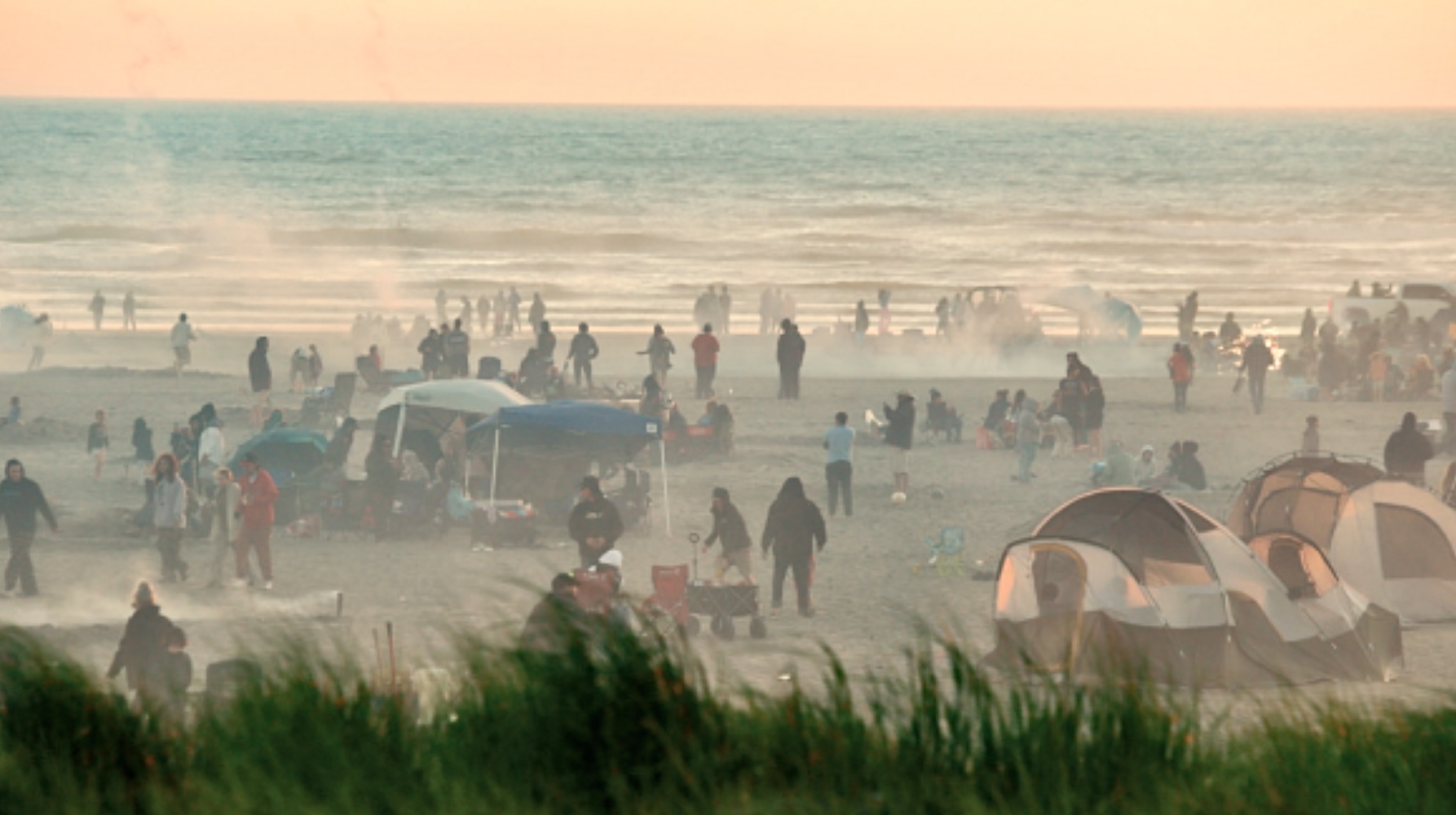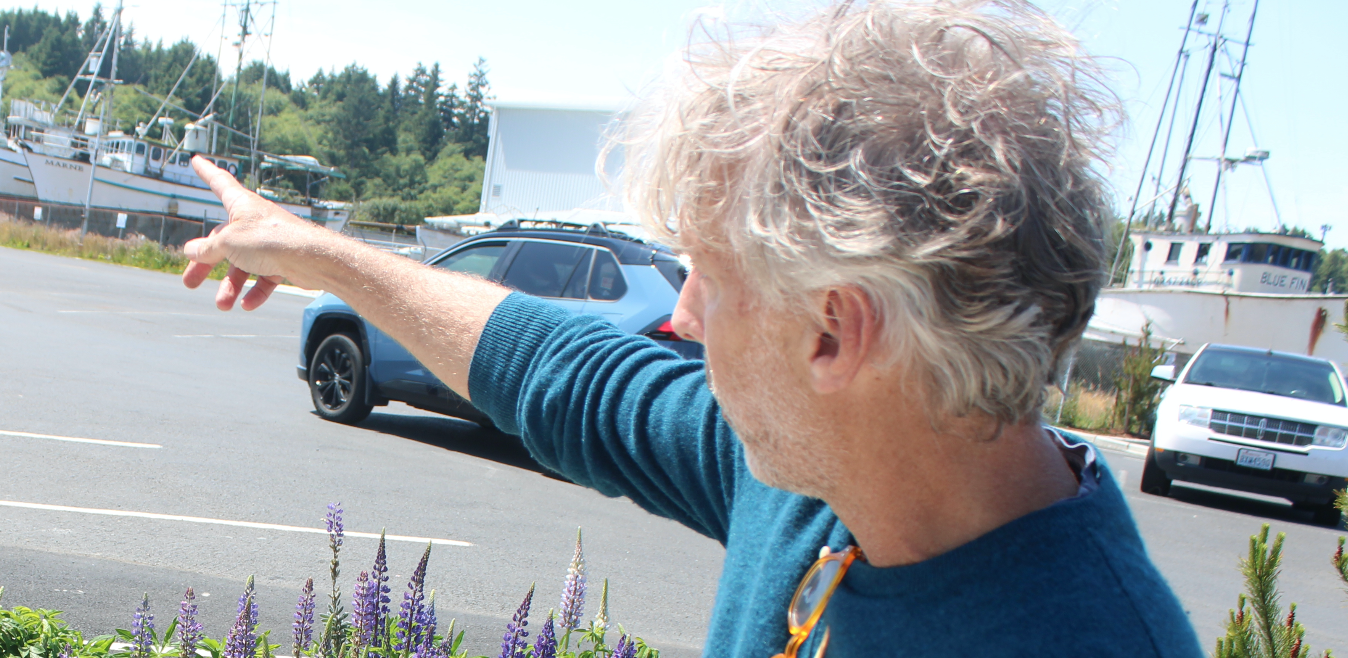Clamdiggers themselves help WDFW police the harvest
Published 4:00 pm Tuesday, October 31, 2006

- <I>CASSANDRA PROFITA photo</I><BR>Marine Enforcement Capt. Mike Cenci, right, counts the number of razor clams collected by Tom Satterwhite, left, and his family after dark Oct. 7. The family was within the limit of 15 clams per person set by the Washington Department of Fish and Wildlife.
LONG BEACH – Stooped razor clam diggers line Long Beach as the setting sun paints the sky a glowing orange and pink.
Watching them through binoculars from inside a brown game warden truck 40 yards away is Marine Enforcement Capt. Mike Cenci of the Washington Department of Fish and Wildlife.
As the tide ebbs, leaving more of the clam beds exposed, Cenci looks past the scampering children and playful dogs, past the slow, laboring diggers wrestling with their clam guns and shovels.
He is looking for suspicious behavior, clues to which diggers are greedy enough to break the rules and harvest more than the permitted 15 clams apiece. He is aided in his task by clamdiggers themselves, who hate to see, and are quick to report, overly greedy harvesting.
Cenci, who also patrols sport and commercial fishing, crabbing and hunting, said it is “amazing” to see the cheating that goes on during the razor clam season.
“There’s something about razor clams,” he said. “People really like them. Many people just can’t help themselves. I watched a one-armed man dig three limits with his hand. Women stuff them down their shirts. Guys fill up their hip boots. Once, I pulled several limits out of a motor home septic tank.”
Season opening
Washington beaches are scheduled to open for another dig Nov. 3 and Clatsop County beaches opened to clamming last week. While thousands of licensed diggers are hunting for razor clams along the Washington and Oregon coast, marine enforcement officers are combing the beaches for violations. To ensure a healthy razor clam population, biologists estimate the number of clams on the beaches each year and fish and wildlife agencies set limits on how much digging can take place.
Patrolling Oct. 7, the first Saturday of the open clamming season on Washington beaches, Cenci and his officer team drive up and down the beach to enforce those limits, using parked cars as cover while they stake out potential culprits.
Several minutes after sliding his truck in between two parked SUVs and pulling out his binoculars, Cenci zeroes in on two men digging side by side.
“There’s a guy down there in a hat. He’s almost got a limit,” he says. “His buddy’s almost got a limit. They’re moving pretty fast. Now the one guy’s going to count his. He’s rinsing off all his stuff. Looks like he’s done.”
He watches them silently for another minute.
“Boy, that is a big sack of clams,” he says.
He follows the men with his binoculars as they walk toward their truck. Then, quickly, he throws his truck into drive and steps on the gas. Seconds later, he is out of the truck and asking the men for their licenses.
“Let’s see what you got here,” he says. “Mind if I take a look?”
He opens their truck’s tailgate, pours out the clams in one guy’s sack and starts counting.
“You’re nine over the limit,” he tells the man.
“I was digging some for my friend,” the man replies.
But Cenci counts 16 clams in the other man’s sack.
“You’re pushing it, and you know it,” Cenci says. He scoops up a pile of clams with both hands and moves them from their truck to his.
“He just got greedy,” says Cenci, climbing into his truck to call in the violation. “I thought that sack looked fat. My perspective is a little off since last year.”
Cenci writes a ticket for $101 and gives it to the man who was nine over the limit.
“The other guy’s over by one,” he says. “I’m not interested in writing some guy a ticket for one over the limit.”
Cenci said he also suspected the man he ticketed was high grading, or leaving the smaller clams he dug behind in the sand and replacing them with bigger ones in his clam sack. His friend had a mixture of larger and smaller clams, but his were all large. Clamming rules require diggers to keep the first 15 clams they dig, regardless of size or breakage, because clams left behind will die unless they are properly replanted.
“I blew that deal,” he said. “They had all their clothes in the car with them. I shouldn’t have pulled the trigger. My gut is they would have been back for more. Now we’re going to have to move up the beach. The whole world knows we’re here now.”
Luck and skill
It takes luck and skill to catch an overzealous clam digger, said Cenci. The throngs of innocent diggers give cover to poachers and make the clamming season a tough activity to patrol.
You have to know what to look for.
“Folks in a hurry, a guy walking down onto the beach with his pants or waders already wet. When you see that, it definitely gets the radar going,” he said.
Some people will try to pack more than 15 clams into one sack, he said, but the more “cagey” individual will make a second and third trip.
Cenci can pick those diggers out of the crowd because they tend to move quickly compared to other diggers on the beach.
“They’re trying to beat the tide,” he said. “They want to go back out there before the next tide comes in. Most folks take the time to take their wet clothes off, rinse off their stuff.”
Some illegal diggers will go to great lengths to avoid being detected, according to Cenci.
“They’ll change clothes, go to a different beach from where they started. That guy’s difficult to catch. I really enjoy catching those people,” he said.
It is time consuming to follow these suspicious diggers around and discouraging when it doesn’t lead to a ticket.
“You can spend half the day following one guy around and end up with nothing,” said Cenci. “You can watch them waste clams, but by the time you get down there you’ve lost track of the hole or it gets washed away by the surf.”
Sometimes, the marine enforcement division will put undercover officers on the beach to walk among the diggers and take a closer look. Those officers have a better chance of nailing someone who is high grading or recognizing someone who is on his or her second trip of the day.
On a weekend day, officers may write as many as 15 tickets for clam violations. Cenci’s division has caught people selling illegal clams in parking lots for $1 apiece, some of which ended up in restaurants. They have found stockpiles of more than a hundred razor clams at once, hidden in people’s backyards and inside their homes. A shellfish license costs about $12 for the season and allows harvest of shrimp, razor clams and crab. Cenci said without the enforcement presence, he thinks there would be more people trying to take advantage of the season.
“A few people feel it’s their birthright to take whatever they want whenever they want. No, it’s the public’s natural resource. The public’s resources are being ripped off,” he said.
“There’s enough of a greed element to make our presence required,” he said.






